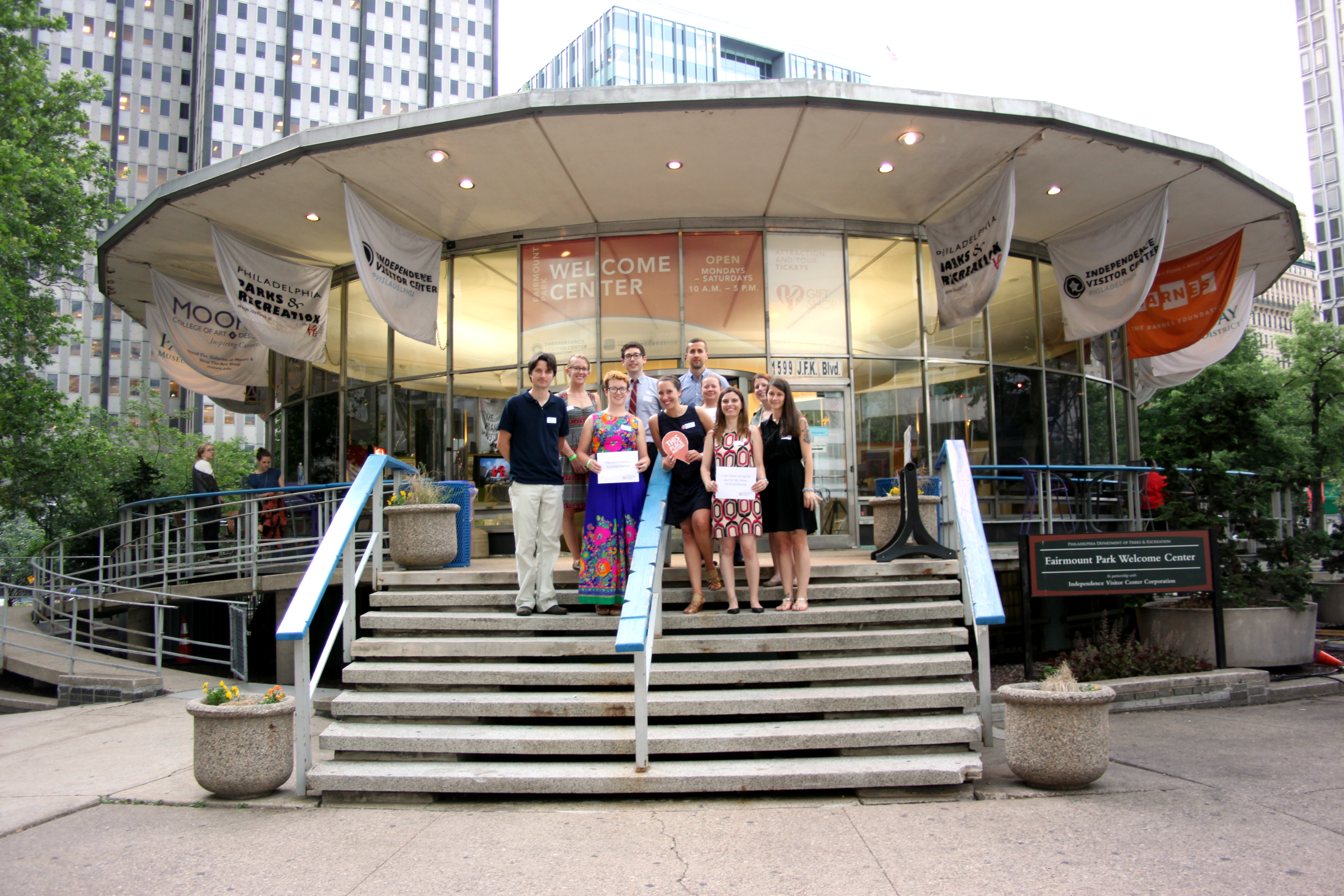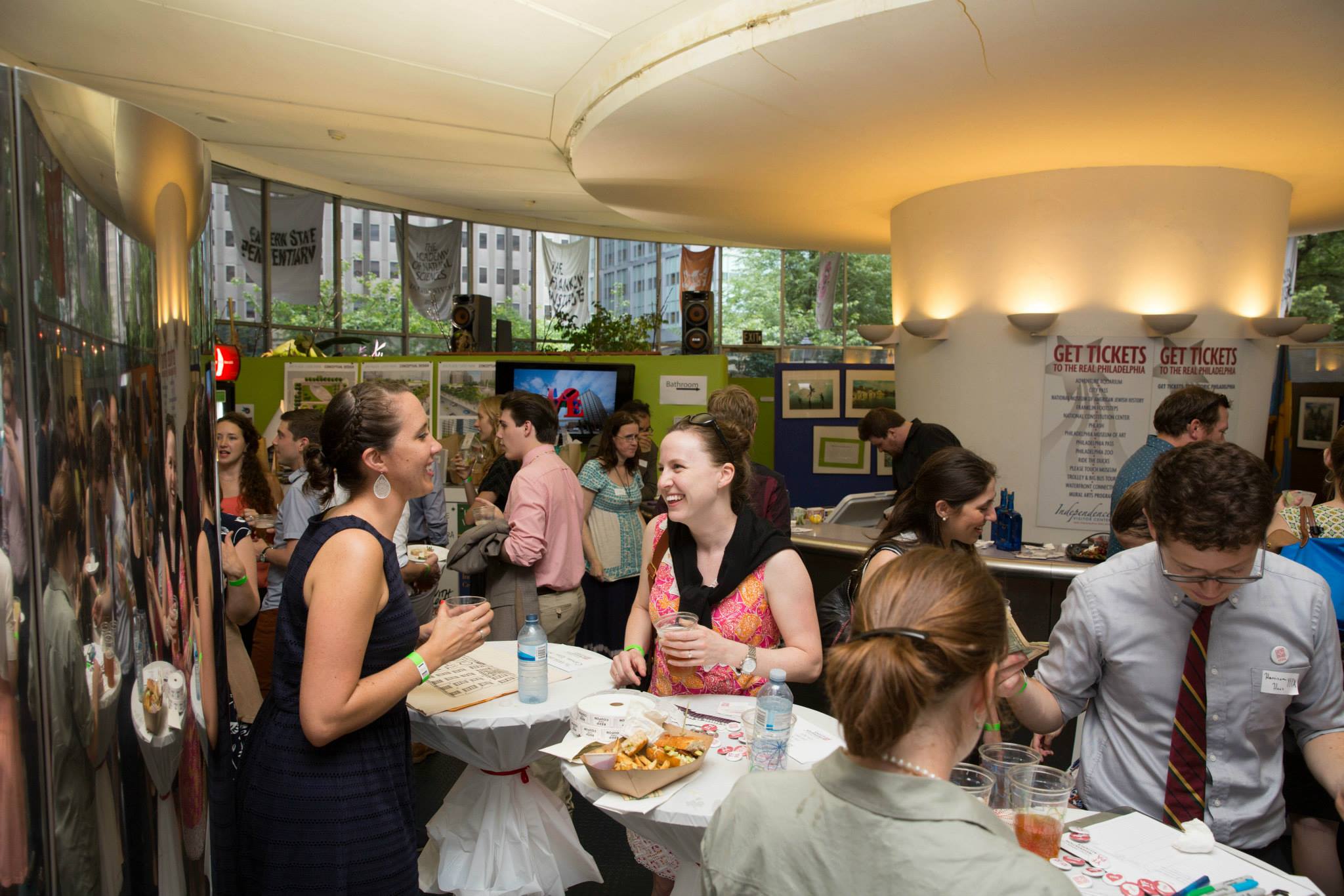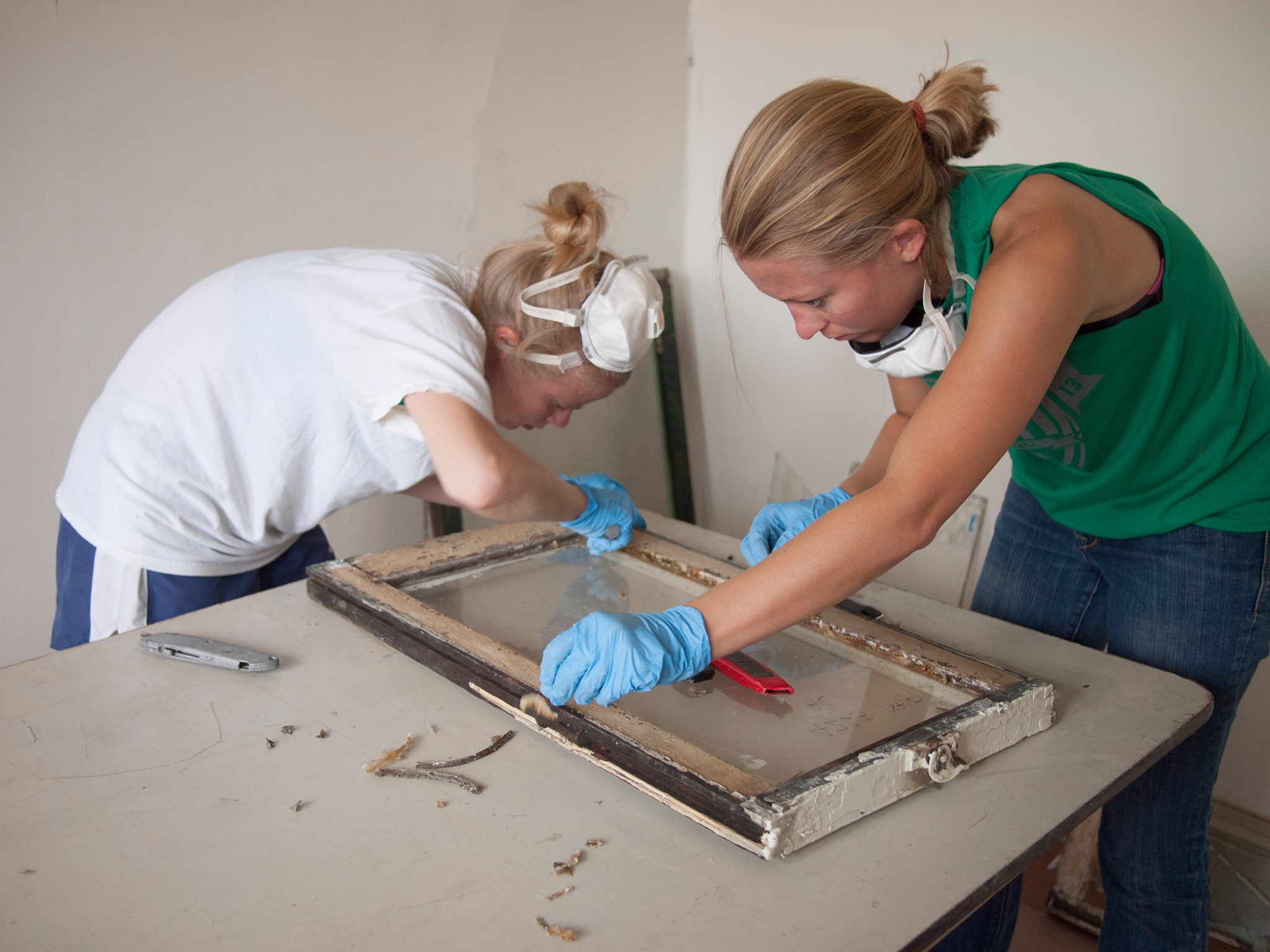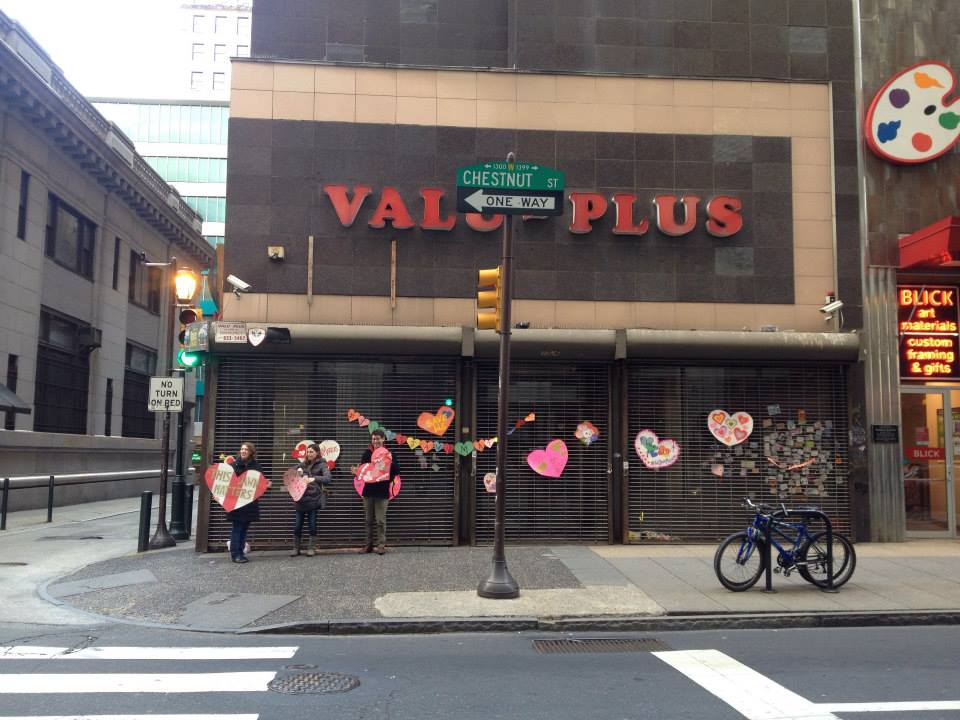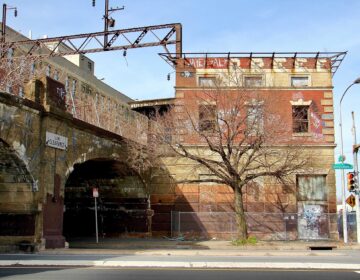Young Friends bring new meaning and tactics to preservation battles
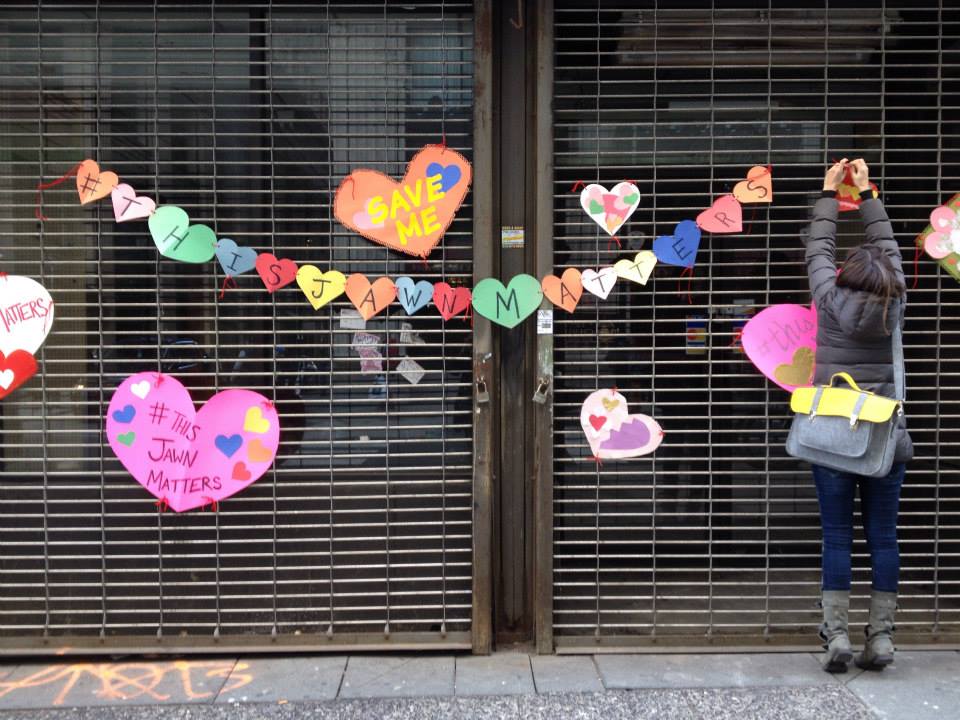
A growing network of young people is challenging the perception that historic preservation is an old activist’s game.
Incorporating new communication and promotional tactics, as well as their professional training, the Young Friends of the Preservation Alliance for Greater Philadelphia are becoming a strong voice and an effective force in protecting the city’s historic resources.
Their social media fingerprints can be found on the successful effort to preserve the Fairmount Park Welcome Center during LOVE Park’s planned renovation. Their sweat equity and professional skills have assisted in window restoration of Victorian homes on Viola Street in Parkside. And their “hearts” have kept the focus on renovation of the Hale Building, an architectural wonder at Juniper and Chestnut Streets.
They have become an energetic complement to the work of the Preservation Alliance, and they are attracting a lot of attention and appreciation for the value of Philadelphia’s historic fabric.
“This is a group interested in expanding the boundaries of what preservation means,” Patrick Grossi, advocacy director at the Preservation Alliance, said. “And while many young friends groups are typically about social events as a way to drive membership, this group is very interested in and driven by advocacy. They’re a logical extension of our efforts, and they bring their own arguments to the table.”
Latest generation
Attempts to form a Young Friends corps in the preservation community have gained and lost steam over many years. An increase in the younger demographic in the city and the growing interest in urbanization seem to have laid the foundation for a more sustainable network this time around.
A kickoff event, with the new motto “In with the Old,” in January 2014 at the just-renovated Fringe Arts Building drew 150 young people including Lynn Alpert and Molly Lester, both graduates of the University of Pennsylvania preservation program.
Alpert and Lester joined the 10-person steering committee of the revived Young Friends, which requires no dues, is strictly volunteer, and mainly consists of 21- to 40-year-olds. “But our events are open to everyone,” Lester said.
Subsequent events and programs have had 100 participants on average, and the group’s Facebook followers are up to 500.
Alpert, 33, a native Philadelphian, fell in love with historic architecture as a Temple art history major wandering through Rome. She graduated from Penn’s preservation program in 2012 and has been working for a cultural resources consulting firm in Central Jersey ever since.
Lester, 29, has been interested in architecture since she was a child growing up in Pottstown, and received her undergrad degree in architectural history at the University of Virginia. After her grad work in historic preservation at Penn, she worked for a tax credit consulting company and is now a freelance architectural historian and consultant.
In addition to preservation professionals, other members of the steering committee include an architect, a historic site administrator/community liaison, and a second-year law student.
But the Young Friends group is trying to appeal to peers with a variety of backgrounds and interests beyond preservation.
“I think young people don’t necessarily concern themselves with historic preservation. They think of it as preserving George Washington’s birthplace,” Lester said. “I think they’re more concerned with urbanization, especially with so many people moving back to the cities. They’re interested in quality of life issues and city planning,” which is reflected in the current popularity of urban exploring and an Instagram focus on city buildings.
“We want to reach that larger audience,” Lester explained. “We don’t necessarily want them to be preservation school grads. We want to reach those who have an interest in how Philadelphia continues to evolve and who want to be part of that.”
Gaining momentum
Following the successful relaunch of the Young Friends in January 2014, the organization quickly found a common cause. The Fairmount Park Welcome Center, built in 1960 by Roy Larson, of Harbeson, Hough, Livingston & Larson, was under threat of demolition as plans progressed for the LOVE Park redesign. The Preservation Alliance spotlighted the mid-century modern structure, and the Young Friends took up the “Save the Saucer” rallying cry. “We created a social media campaign, #savethesaucer, raised awareness on Facebook, and showed up at public meetings,” Alpert said.
Last spring, plans were revealed to update but keep the Saucer, with a new green roof, ADA-accessible ramp, and food and drink concession. The Young Friends rejoiced. “It was great to see something from start to finish – to be there and get to celebrate it,” Alpert said.
Other early actions of the Young Friends included a cleanup at the Furness Arch in Fairmount Park as part of the city’s Love Your Park program in May 2014, and the Viola Street window restoration project in conjunction with Habitat for Humanity in August that year.
Last February, the group turned its attention and affection on the Hale Building, a former bank erected in 1887 with upper floors that look like a Victorian castle in the sky. Various owners over the years have modernized and mauled the ground floors.
With an idea conceived by counterparts in Buffalo and with supplies provided by the National Trust for Historic Preservation, the Young Friends staged a “heart-bombing” during the season for sweethearts. They cut out large valentine hearts, decorated them with sparkles and love notes, and hung them all over the first floor exterior. “It was a great experience. People passing by took lots of pictures of it, and we got a lot of positive engagement,” Alpert said.
The group has also taken less symbolic, more concrete actions to support preservation efforts. Members wrote the nomination for the Quaker National Bank on Chestnut Street, another Willis Hale design, to the Philadelphia Register of Historic Places. And at the “In With the Old” party held last May, the Young Friends raised more than $3,000 to fund an advocacy internship at the Preservation Alliance.
The members will take to the streets again this Sunday (Oct. 18), for their “Pedal, Plan & Preserve” bike tour as part of this year’s State of Young Philly. They will meet in Society Hill at 11 a.m. to learn how the neighborhood was saved from urban renewal through grassroots efforts and public-private partnerships. Next stop will be Bok Technical High School, the Art Deco former high school, to talk with the developers about plans to repurpose the building as collaborative workspaces. The tour will end with refreshments on Passyunk Avenue, where small commercial projects have helped revive the neighborhood.
Latest victory
The group’s latest initiative has focused on the proposals for the Sharswood neighborhood in North Philadelphia, where the Philadelphia Housing Authority has proposed a massive redevelopment that would create 1,200 new housing units and renew the Ridge Avenue commercial corridor. The plan includes the acquisition and demolition of nearly 1,300 parcels of private and public lots, which include the historic and cultural fabric of the existing community, Lester said.
Last week, the Young Friends learned that the Pennsylvania Historical and Museum Commission sent a letter to PHA outlining its responsibilities regarding cultural resource requirements in Sharswood. “They have now been formally made aware that they must do additional work as the scope of the project has expanded,” Alpert said. The Young Friends were also cited by PHMC as a suggested consulting party for the process. “We are excited to know that we will be a part of the work in the neighborhood, and can continue to keep an eye on PHA and their plans regarding the historic building stock in Sharswood,” she said.
“We’re trying to show the value of the neighborhood that currently lives there,” Lester said. “There are better solutions than just knocking down everything that’s there and starting over. We hope to help find creative answers.”
Keeping up the conversation
In Philadelphia, preservation has often taken a back seat to other concerns, a situation the Young Friends hope to change.
“I think for a city with all its historic resources, it hasn’t always put a priority on them,” Lester said. “Now that development has taken off, it’s been too easy to lose preservation in that conversation.”
Alpert has seen the preservation focus in Philadelphia aimed at specific projects, but at the loss of the larger picture. “Preservation happens a lot when it’s convenient,” she said, and pointed to the long struggle to save the Divine Lorraine building at Broad and Fairmount. “It’s now everyone’s favorite building. But a lot was lost in the meantime. I think about all that was there and what it could have been. So much had to happen to it for us to get to this point,” she said.
It’s easy to reduce preservation efforts to high-profile sites, Lester said. “But preservation should come into play in day-to-day planning. Organizations working on the neighborhood level aren’t getting the support they need. We need to support preservation as a neighborhood goal.”
Added Alpert: “We need to help care for the buildings they love.”
WHYY is your source for fact-based, in-depth journalism and information. As a nonprofit organization, we rely on financial support from readers like you. Please give today.



